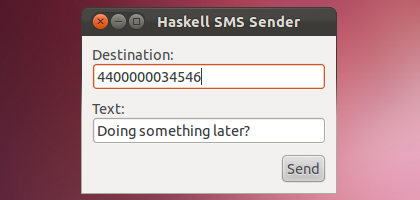Functional Programming
,
Gtk
,
Gtk2hs
,
Gui
,
Hails
,
Haskell
,
Open Source
,
Reactive
,
UI
Delving into Reactive Values
In a previous posts we examined the current state of GUI programming in Haskell, how imperative libraries get in the way of functional beauty, and how (non-FRP) reactive programming enables short, declarative code and facilitates code reuse. But without the low-level details, without more information on how this framework is structured, all we have is an idea, a draft on a piece of paper. It’s impossible to know how much effort it will require, or how much it will affect our code.
...
FRP
,
Functional Programming
,
Functional Reactive Programming
,
Gtk
,
Gtk2hs
,
Haskell
,
Reactive
,
UI
GUI programming in Haskell "the old way"
As discussed in a previous post, purely functional GUI frameworks may fail to deliver in terms of feature coverage, look-and-feel and codebase scalability. As a result, many programmers turn back to good-old Gtk+ for their user interfaces (see, for instance, Ian-Woo Kim’s hoodle).
...
FRP
,
Fudgets
,
Functional Reactive Programming
,
Gtk
,
Gtk2hs
,
Gui
,
Haskell
,
Qt
,
Reactive Banana
,
UI
,
Wx
,
Wxhaskell
On the state of GUI programming in Haskell
GUI programming in functional and logic languages tends to feel quite hard. There is nothing intrinsic in FP that makes GUI programming extra hard, but when everywhere else you are surrounded by nice, abstract, compositional, high-level descriptive definitions, working at the GUI’s low level feels… well, like you’re doing something wrong.
...

